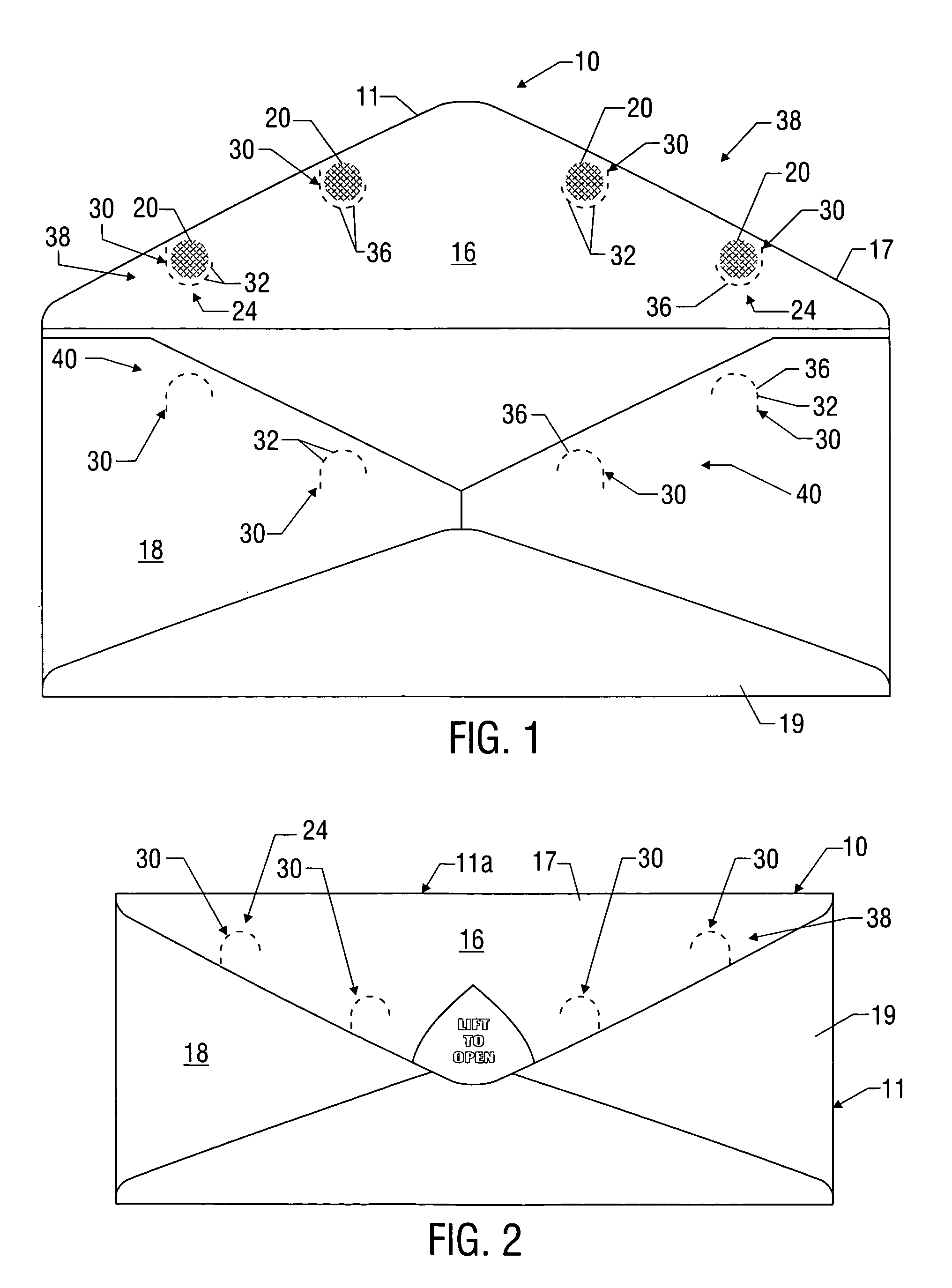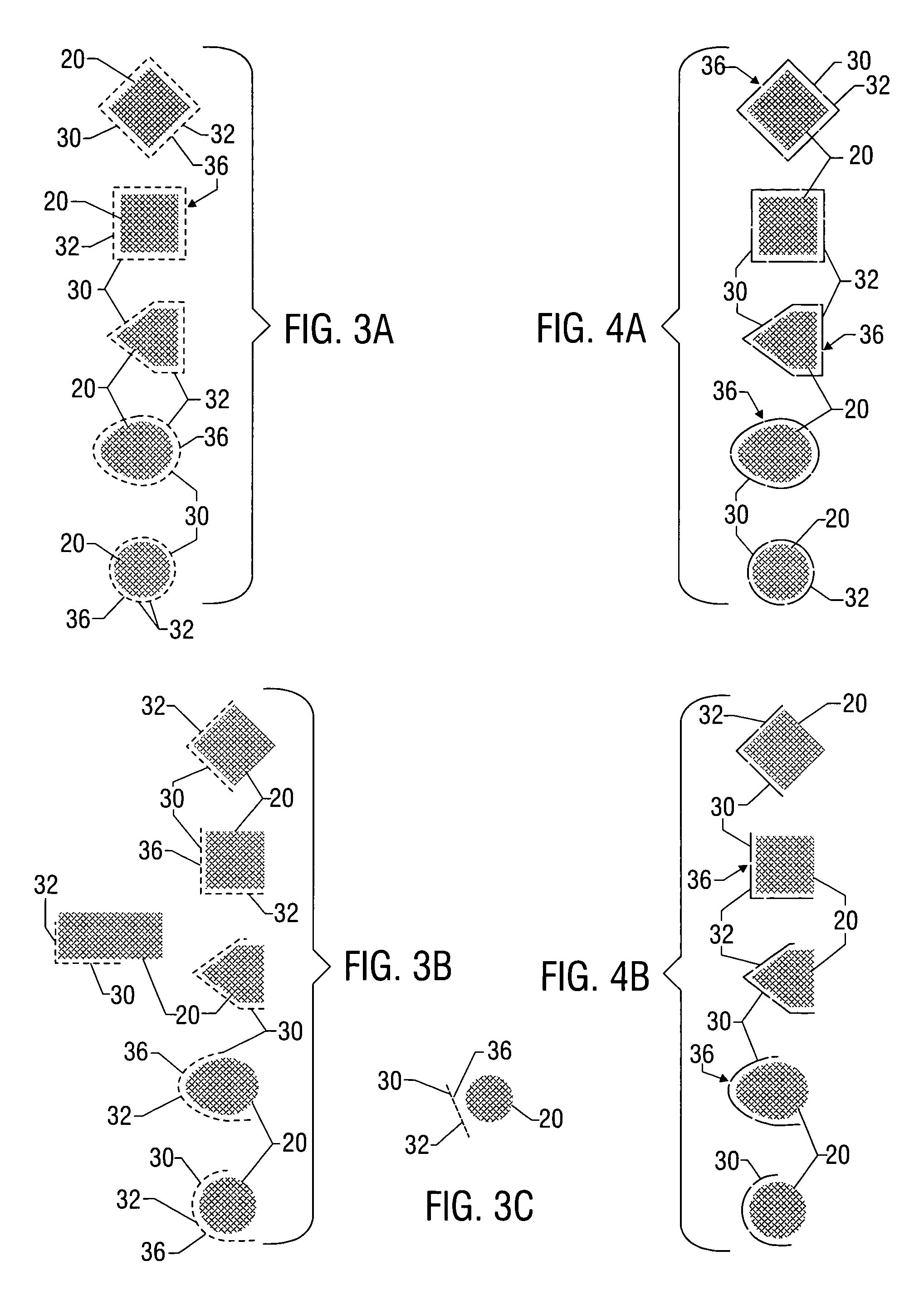Apparatus for fastening and separating containers
a technology for fastening and separating containers, applied in the field of apparatus for fastening and separating container portions, can solve the problems of difficult unsealing or opening of items, unsatisfactory attempts to solve problems and inefficiencies associated with fastening and separating such items, and achieve the effect of easing the separation and releasing the firs
- Summary
- Abstract
- Description
- Claims
- Application Information
AI Technical Summary
Benefits of technology
Problems solved by technology
Method used
Image
Examples
Embodiment Construction
[0029]Presently preferred embodiments of the invention are shown in the above-identified figures and described in detail below. It should be understood that the appended drawings and description herein are of preferred embodiments and are not intended to limit the invention or the appended claims. On the contrary, the intention is to cover all modifications, equivalents, and alternatives falling within the spirit and scope of the invention as defined by the appended claims. In showing and describing the preferred embodiments, common or similar features are indicated by like or identical reference numerals or, in the absence of a reference numeral, are evident based upon the appended drawings and / or description herein. The figures are not necessarily to scale and certain features and certain views of the figures may be shown exaggerated in scale or in schematic in the interest of clarity and conciseness.
[0030]As used in this patent (including the headings) of this patent, the terms “...
PUM
| Property | Measurement | Unit |
|---|---|---|
| shape | aaaaa | aaaaa |
| size | aaaaa | aaaaa |
| adhesive | aaaaa | aaaaa |
Abstract
Description
Claims
Application Information
 Login to View More
Login to View More - R&D
- Intellectual Property
- Life Sciences
- Materials
- Tech Scout
- Unparalleled Data Quality
- Higher Quality Content
- 60% Fewer Hallucinations
Browse by: Latest US Patents, China's latest patents, Technical Efficacy Thesaurus, Application Domain, Technology Topic, Popular Technical Reports.
© 2025 PatSnap. All rights reserved.Legal|Privacy policy|Modern Slavery Act Transparency Statement|Sitemap|About US| Contact US: help@patsnap.com



